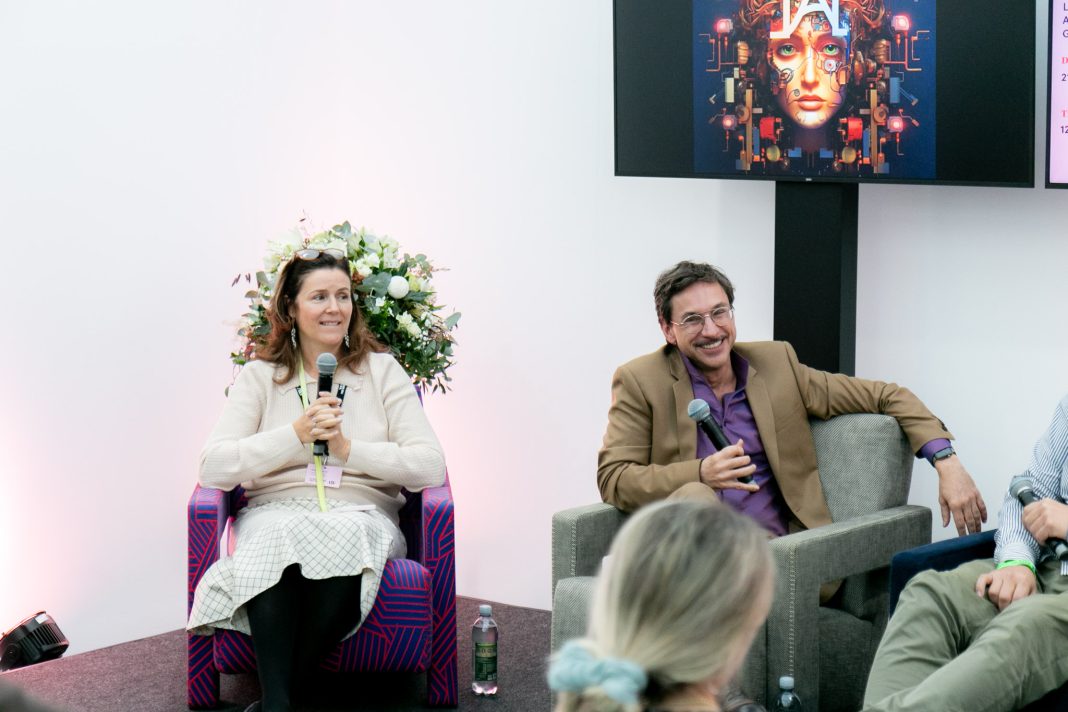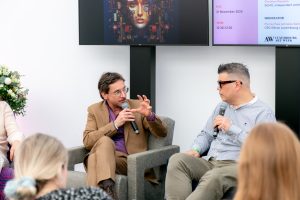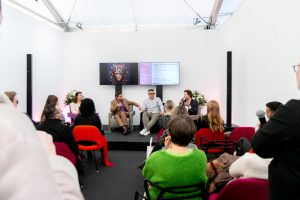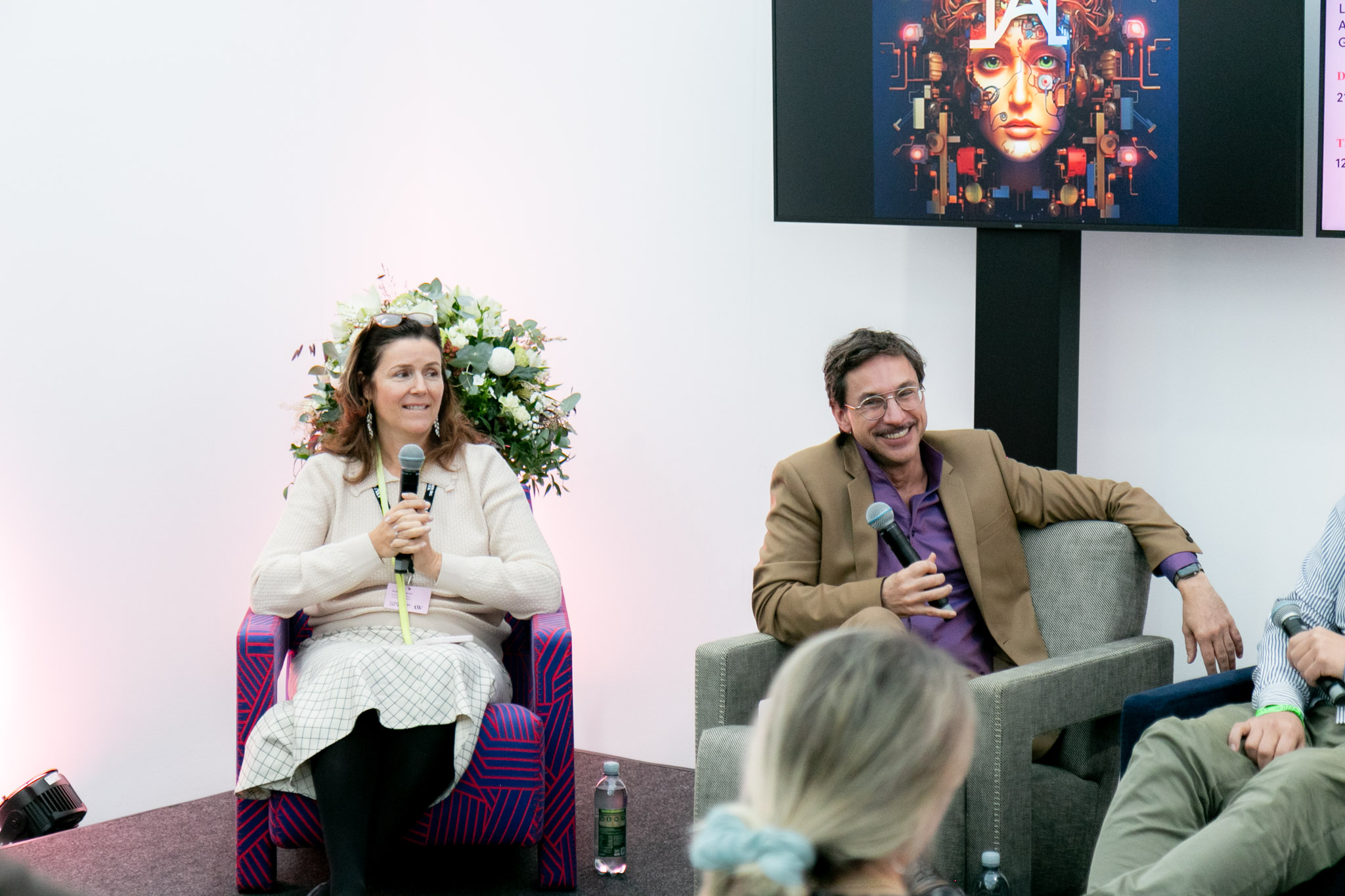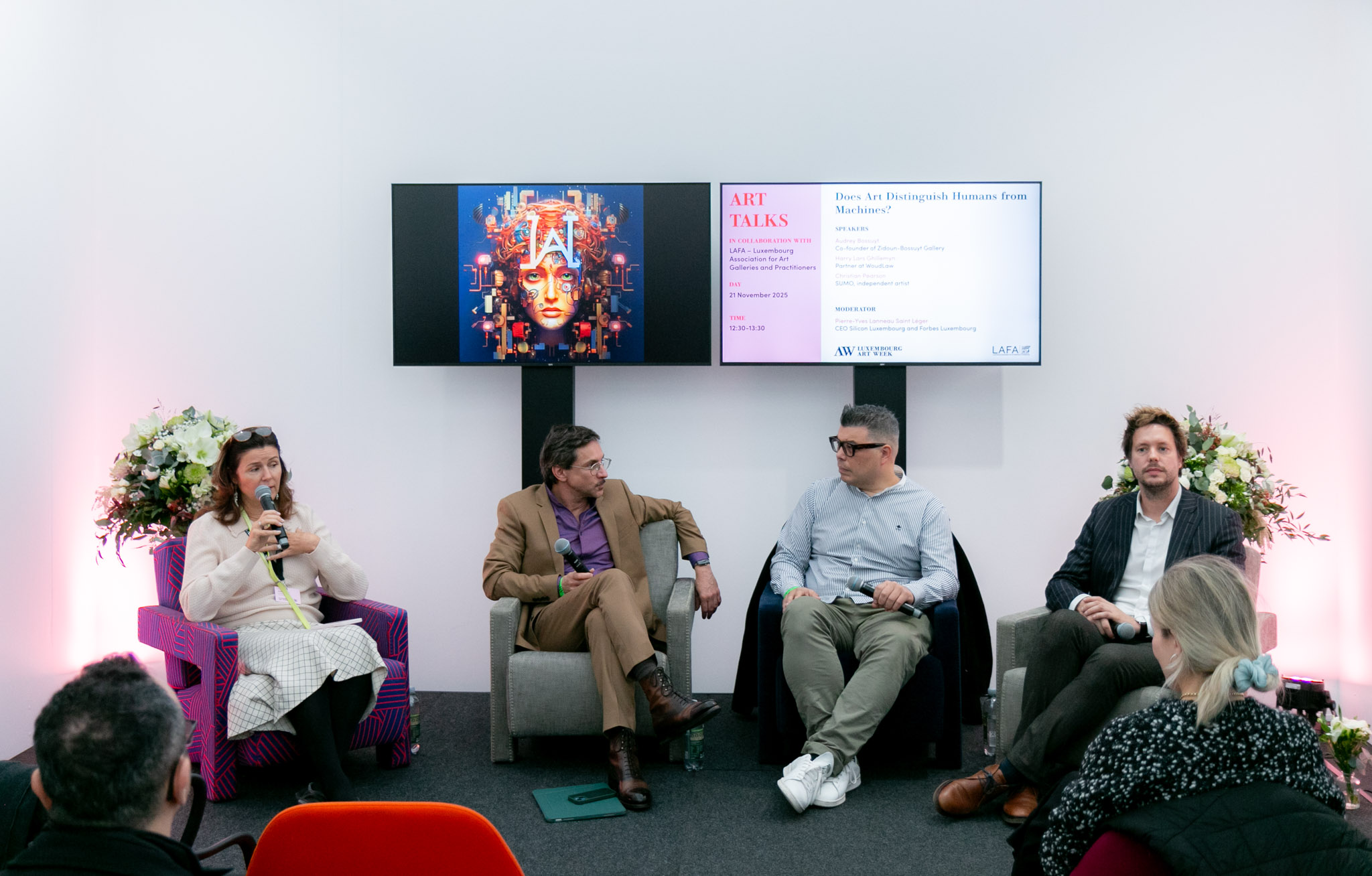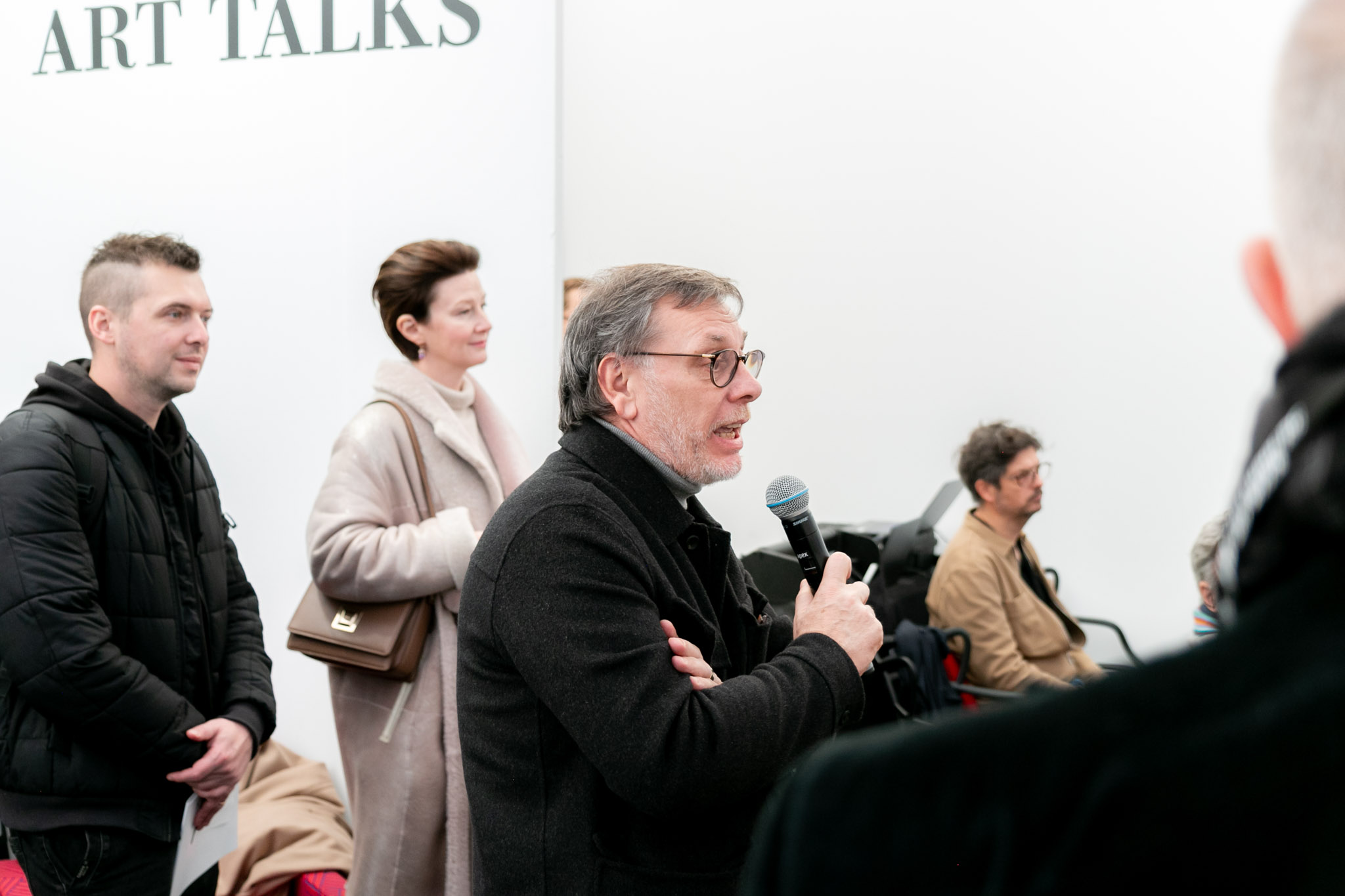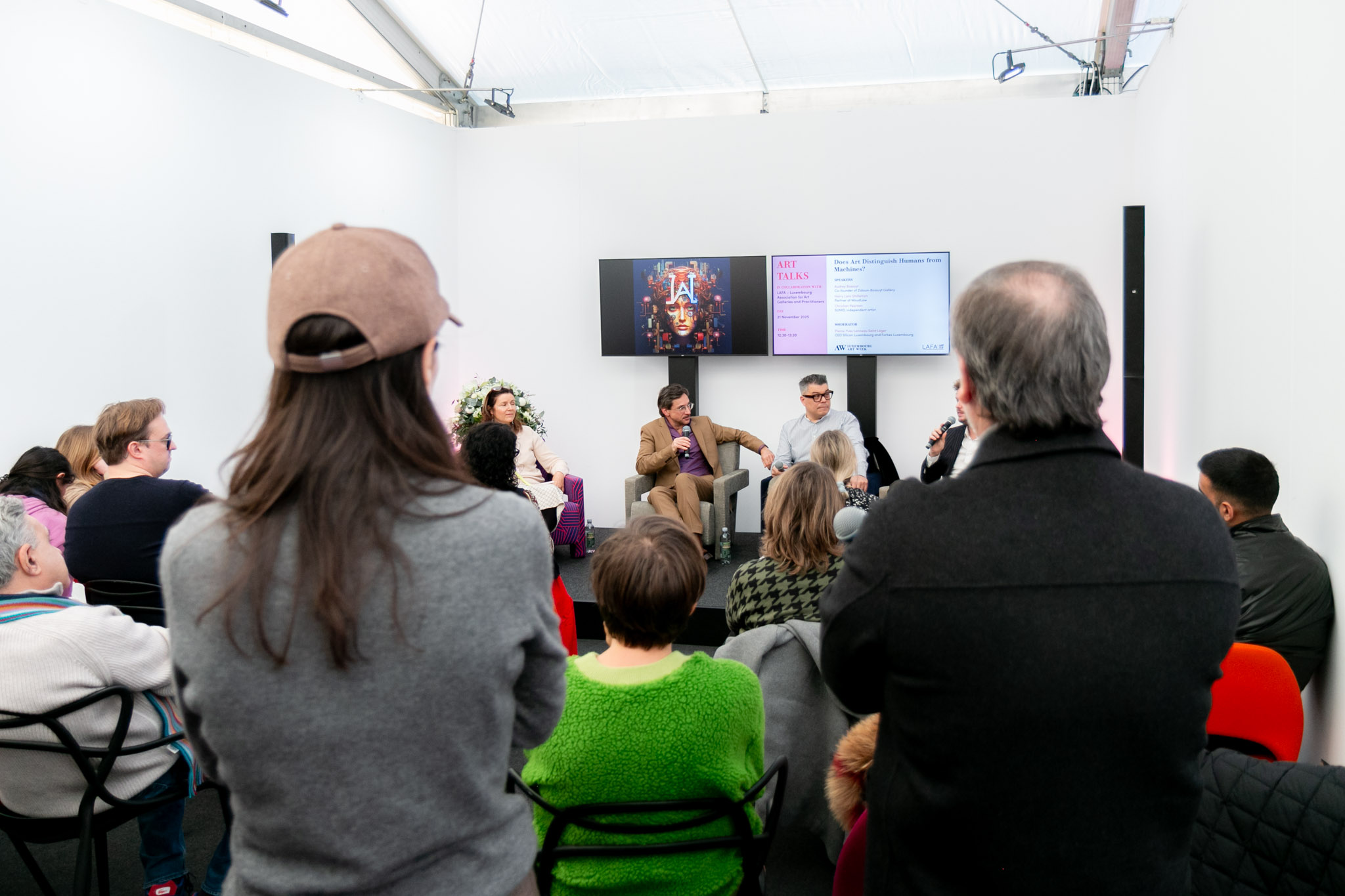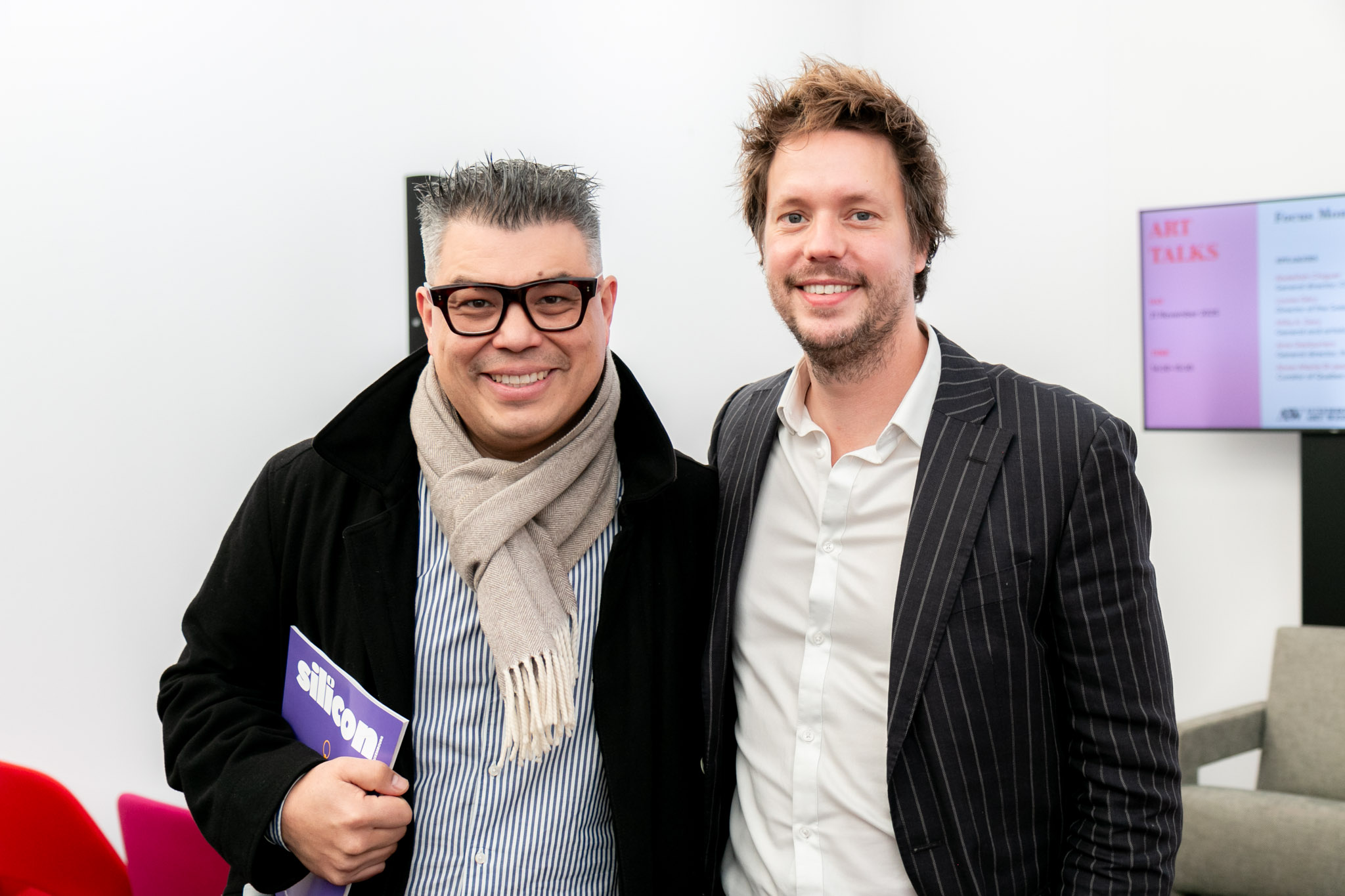The artist Sumo, lawyer Harry Lars Ghillemyn, and gallery co-founder Audrey Bossuyt shared their perspectives on how AI is transforming the world of art during a panel discussion at Luxembourg Art Week. The notion of creative control is key, whilst inspiration remains human.
Artificial intelligence is “reshaping art and reshaping the market,” said Audrey Bossuyt, co-founder of the Zidoun & Bossuyt Gallery and an exhibitor at this year’s Luxembourg Art Week. “AI highlights anxiety around society, around what it means to be an artist, what it means to be human,” she added. But it’s also a tool that can allow artists to create new works that were not possible before. “I think, as a gallerist, that it’s a fantastic new medium for the 21st century.”
That being said, “it’s really interesting how violent the reactions [to using AI] can be,” noted Bossuyt, one of the panellists at a roundtable discussion moderated by Forbes Luxembourg CEO Pierre-Yves Lanneau Saint Léger during the art fair. Looking back, there have been similar reactions to new technology or concepts invading the art world, whether that was the invention of photography at the beginning of the 20th century, the artist Marcel Duchamp presenting his “readymades,” the emergence of video art, the Internet, and digital art, or even the use of Photoshop.
What’s more, she said, it’s also attracting younger collectors, from the Millennial or Gen Z generations, to galleries and auction houses. A painting by the Ai-Da Robot, produced using AI, sold for more than $1 million at Sotheby’s in 2024; 28 of the 34 lots at Christie’s “Augmented Intelligence” sale earlier this year were snapped up, selling for more than $700,000 in total. “Thirty-five to 40% of the buyers were new clients of Christie’s,” said Bossuyt, and “these collectors were very young.”
Many of the gallery owner’s “big clients” in the United States are between 50 and 95 years old, she added, and it can be difficult to attract younger clients today. But works that have been produced using AI can be a way to engage with these “new kids” on the block. “Technology is part of their identity. It’s normal for them to use these tools.”
The notion of “creative control”
However, the increased use of AI raises questions around what art is and how artists, and their works, can be protected. Social media platforms like Meta or LinkedIn, for instance, now allow people to “opt out” of allowing the platforms to use their posts to train large language models, but it’s not a failsafe mode of protection, as others could still repost the content.
The European Union does have regulation around AI, but art was seen on a “secondary, or even a tertiary scale,” pointed out Harry Lars Ghillemyn, “avocat à la cour” and partner at Woud Law Firm, and a lot of questions remain.
“A short summary would be that: purely AI-generated art is not protected from a copyright perspective. You need to have a minimum of intellectual creativity that goes into the process,” he explained. The notion of creative input is key. Artists must give context and meaning to the work. To adapt a quote from Antoine de Saint-Exupéry, “an idea without a plan is just a wish,” said Ghillemyn. “If the person giving the prompt does not have sufficient creative control, it will be the AI developer of the platform who will be the owner of the artwork.”
“I think it’s only partly correct to compare generative AI with digital art or Photoshop. We are really talking about a fundamentally different technology,” said Ghillemyn. The technology “uses large databases to generate new content, not existing content that is enhanced with Photoshop. This is very important. If you talk about the legal perspective and how artists or art galleries are protected, we talk about the notion of ‘creative control.’ How generative AI differs from digital art or Photoshop is that you’re not in control of the creative process, by default. So if you want to be protected as an artist while you use generative AI, you need to be able to establish that you make intellectual choices and creative choices, in the arrangement, the composition, the colours, the emotion, the prompting, that eventually leads to a creative result of which you were, as an artist, in control.”
Luxembourg street artist Sumo, another panel participant, asked a crucial question: “Where do you draw the line to determine whether a person is sufficiently in control of the creative process?”
“The truth is: we don’t know,” replied Ghillemyn. It will take time for court cases to be decided and for case law to be developed. “We are in the beginning phases of this new technology.”
Inspiration must remain human
Artists today can use AI to create, execute, amplify, and disseminate their work, said Lanneau Saint Léger, but the inspiration remains “fully human.”
Indeed, “in the creative process, you first start with an idea or with a message or a goal that you’re working towards, and AI is not going to do that for you,” said Sumo. “It is you, the artist, who is going to give it context and meaning. It is really on you as the artist to be in control, and to also guide the AI and work like an art director and tell it what the next step and development should be.”
“Art has an intent behind it; it translates the emotions from an artist,” he concluded. “It’s much more than just pushing a button and having a random image generated. It might look nice, but it doesn’t have any artistic value because there’s no intent behind it.”

